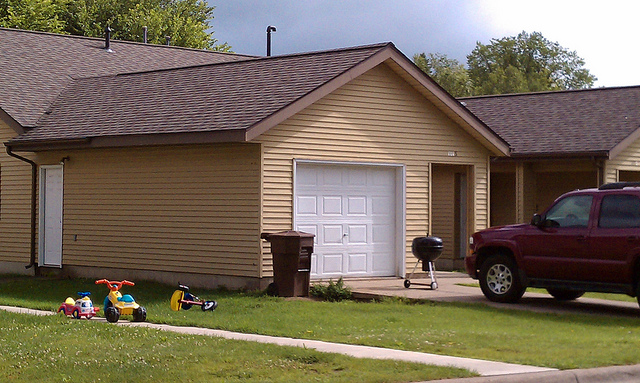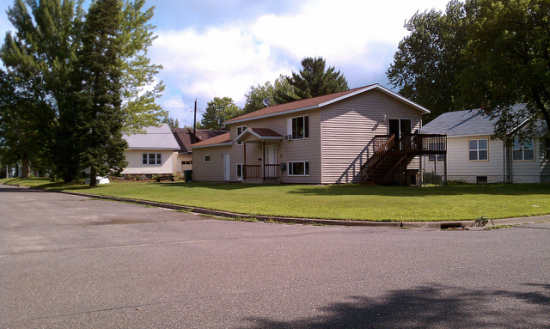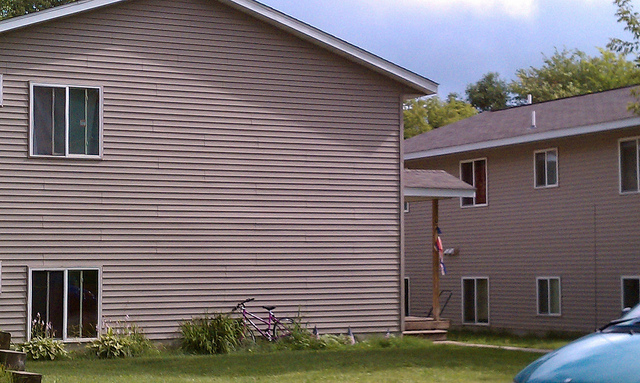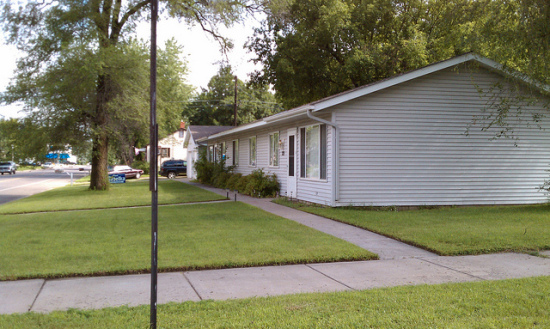We spent how much to get what?
Cities that mess with their traditional development pattern by investing big money to make their historic neighborhoods more auto-friendly not only spend huge sums but they chase away jobs and commercial enterprise while attracting the type of low value investments that only reinforce a downward spiral.
We've taken a short break from our examination of one neighborhood in my hometown of Brainerd, Minnesota. To review what we have examined so far:
- In Where the Money Went, we looked at how cities wrap their wealth into building high-speed, high-capacity roads through their traditional neighborhoods. The ethic employed values auto trips over all other trips, to the point where communities continue to plow their fleeting wealth into the system even as it is crumbling faster than it can be maintained.
- Then, in Archeology of a Historic Corner, we analyzed traces of the traditional development pattern and show how the switch from the pedestrian-oriented model of development to an auto-oriented pattern has driven out jobs, displaced commercial investment to adjacent communities and created a artificial demand for more transportation improvements (from people leaving the neighborhood, which they now do more frequently).
- In the third post in the series, Archaeology of a Neighborhood, we looked at a traditional home in an historic neighborhood and how its style and placement reinforced the neighborhood pattern. We also discussed the reasons why the switch to an auto-oriented pattern for the neighborhood devalued the home and, subsequently, why it suffers from neglect.
At the end of this third piece, we made the following observation:
When you are forced to drive everywhere, when the public realm is taken away from people and given over to cars, traditional neighborhoods lose their charm. In an auto-dominated mindset, these places do not fare well. They quickly become economically uncompetitive. Subsequently, these neighborhoods do not create anything near the tax value necessary to cover the ongoing maintenance costs they require. Cities that have gone down this route can never build enough new, shiny stuff on the periphery to make up for the revenue gap they have created in their old, traditional neighborhoods.
This is not to say that there has not been new residential investment within this neighborhood. There has been, but it is random, isolated and low end relative to the investments that have taken place in adjacent communities. This post is going to look at some examples.
The first is one of the nicer newer-style homes in southeast Brainerd. Certainly this was looked at as an "investment" by the city officials. A few things to note that are important. The first is how this home has responded to the auto-orientation of the neighborhood. This style of architecture, derogatorily called a "snout house" for the protruding garage, communicates one thing to the public realm: a car lives here. As such, the home is disconnected from the neighborhood and the adjacent properties. This is just a cheaper version of the standard suburban home found in adjacent communities, only with a smaller lot and building footprint.

That is actually the second thing to note about the house - compared to other home investments in the region that took place during this era of development, this was definitely on the low end. Even when this neighborhood attracts new investments, it is failing to attract the capital necessary to make it prosperous (and justify the massive infrastructure investments that exist here).
The next photo illustrates this as well. It is a home of the 1980's/90's design that could be anywhere in suburbia. It has responded to the auto-orientation by adding more land for a buffer, setting the structure back further to give separation from the road and - at least on one side - eliminating windows that front the street. This is a random infill project that adds no value to adjacent properties or the public realm. It does not spawn further redevelopment and, in that sense, it fails to build on the public investments that have been made along this street. It may not be a bad house, but it is definitely in the wrong neighborhood.

Another common style of development found in these neighborhoods is the apartment, which is typically embraced by public officials as a great investment that "fits" with the neighborhood. Unfortunately, "fitting" in this sense means that it is housing for poor people, like the other housing in the neighborhood has become.
One might be tempted to think that an infill apartment is part of a "Strong Towns" approach since it will have a higher return-on-investment than if a low-end single-family home were built on the lot. Think again.
An apartment, especially when it is designed to look like a military barracks, is at best a one-time tax boost. Without the support of a vibrant neighborhood, this structure won't appreciate over time. And a design like this actually detracts from the adjacent properties, stifling further investment. You can have the barracks, but that will be all you get. A low-end investment that will not appreciate or create any redevelopment demand on nearby properties.

Some may drive by the place shown in the next picture and see a nice looking apartment building in a sea of decay and think, "I wish there could be more of this here." I look at this building and am offended for the people that inhabit this space. Are they not even worthy of windows, let alone a place to walk to, even if it is single file along their miniature sidewalk?

When I am working with public officials on these issues I often ask them whether or not a new doctor moving to the area would move into town or would locate somewhere else. The answer is always that a doctor, having the means, would choose to live somewhere else. For some reason that doesn't sit well with people when they think about that for a while. That fact gives me some hope.
As a nation, we have invested millions in retrofitting our traditional neighborhoods to accommodate higher automobile speeds and volumes. The result is that we have driven out investment and attracted a style of development that does not generate enough prosperity to maintain the systems that serve it. Cities that continue down this path are trapped in a long, slow decline brought about by a system that is financially insolvent.
There is a different way. Now that we have thoroughly examined this neighborhood, the next time we come back to this topic we'll take a look at what can be done to put it, and places like it, on a path to prosperity.
Want to bring the Strong Towns team to your community to talk about the Strong Towns movement with public officials and local leaders? Sign up for a Curbside Chat, our initiative to bring the Strong Towns message to towns and neighborhoods across America. You can also join us on Facebook and Twitter.
